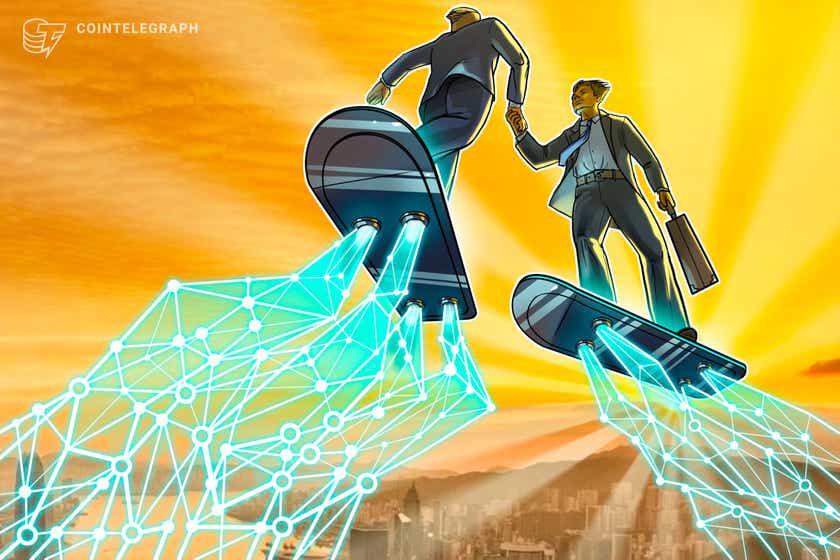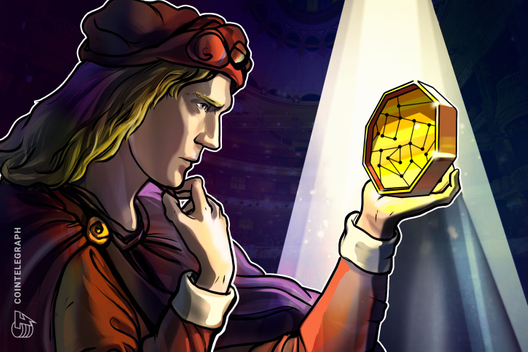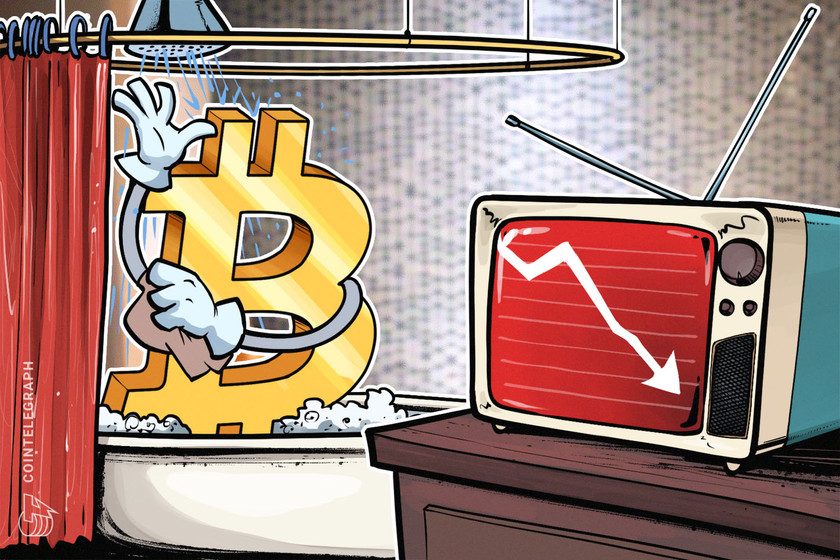What are perpetual futures contracts in cryptocurrency?
What is Bitcoin? How does blockchain work? How to mine cryptocurrency? We are glad to help you answer these questions with our quick guides in Explained section.
rn”,”seo_description”:”What is Bitcoin? How does blockchain work? How to mine cryptocurrency? We are glad to help you answer these questions with our quick guides in Explained section.”},”words_count”:1014,”description”:”A perpetual futures contract does not have an expiration date and aims to profit from the non-delivery of the actual commodity”,”author”:{“id”:1415,”title”:”Jagjit Singh”,”url”:”jagjit-singh”,”twitter”:””,”google_plus”:””,”photo”:””,”gender”:”male”,”description”:”Jagjit is passionate about the blockchain and crypto space and has been closely following the trends in the crypto space. He’s himself a HODLer, which makes his voice authoritative and his writings an exciting piece of work.”,”facebook”:””,”email”:””,”linkedin”:””,”created_at”:”2021-11-03 12:47:28″,”updated_at”:”2022-06-02 09:53:58″,”deleted_at”:null,”innovation_circle_url”:null,”avatar”:”https://cointelegraph.com/assets/img/icons/author_male.jpg”,”hash”:”aHR0cHM6Ly9jb2ludGVsZWdyYXBoLmNvbS9hdXRob3JzL2phZ2ppdC1zaW5naA==”,”relativeUrl”:”https://cointelegraph.com/authors/jagjit-singh”,”user_id”:1415,”language_id”:1,”name”:”Jagjit Singh”,”desc”:”Jagjit is passionate about the blockchain and crypto space and has been closely following the trends in the crypto space. He’s himself a HODLer, which makes his voice authoritative and his writings an exciting piece of work.”,”seo_title”:””,”seo_description”:””,”enabled”:1,”show_in_authors”:0,”show_in_experts”:0},”category_id”:65,”audio”:”https://s3.cointelegraph.com/audio/100991.73ebf8f8-4ce2-44e0-bd5b-c8838da6b70b.mp3″,”tags”:[{“name”:”Blockchain”,”uri”:”/tags/blockchain”,”super”:1,”page_title”:”Blockchain News”},{“name”:”Cryptocurrencies”,”uri”:”/tags/cryptocurrencies”,”super”:0,”page_title”:”Cryptocurrencies News”},{“name”:”Investments”,”uri”:”/tags/investments”,”super”:0,”page_title”:”Investments News”},{“name”:”Futures”,”uri”:”/tags/futures”,”super”:0,”page_title”:””},{“name”:”Trading”,”uri”:”/tags/trading”,”super”:0,”page_title”:”Trading News”}],”tag_title”:”Blockchain”,”date”:”57 MINUTES AGO”,”badge”:{“title”:”Explained”,”label”:”default”},”qty”:5,”stats_pixel”:”“,”stats_pixel_url”:”https://zoa.cointelegraph.com/pixel?postId=100991®ionId=1″,”shares”:1,”infographic”:false,”sponsored”:false,”explained”:true,”press_release”:false,”show_referral”:false,”social_description”:””,”social_translators”:{“clipboard_popup_label”:”Link copied”,”socialWechatFooterError”:”WeChat error”,”socialWechatFooterText”:”WeChat share”,”socialWechatHeaderText”:”WeChat share”},”social_shares”:{“post_id”:100991,”post_url”:”https://cointelegraph.com/explained/what-are-perpetual-futures-contracts-in-cryptocurrency”,”post_titles”:{“normal”:”What are perpetual futures contracts in cryptocurrency?”,”twitter”:”What are perpetual futures contracts in cryptocurrency?”},”post_text”:{“normal”:”What are perpetual futures contracts in cryptocurrency?”,”twitter”:”What are perpetual futures contracts in cryptocurrency? https://cointelegraph.com/explained/what-are-perpetual-futures-contracts-in-cryptocurrency via @cointelegraph”},”accounts”:{“twitter”:”@cointelegraph”}},”socials”:{“facebook”:{“url”:”https://www.facebook.com/sharer/sharer.php?u=https%3A%2F%2Fcointelegraph.com%2Fexplained%2Fwhat-are-perpetual-futures-contracts-in-cryptocurrency”,”count”:null,”short”:”fb”,”fa”:”facebook”},”twitter”:{“url”:”https://twitter.com/intent/tweet?text=What+are+perpetual+futures+contracts+in+cryptocurrency%3F https%3A%2F%2Fcointelegraph.com%2Fexplained%2Fwhat-are-perpetual-futures-contracts-in-cryptocurrency via @cointelegraph”,”count”:null,”short”:”tw”,”fa”:”twitter”},”telegram”:{“url”:”https://telegram.me/share/url?url=https%3A%2F%2Fcointelegraph.com%2Fexplained%2Fwhat-are-perpetual-futures-contracts-in-cryptocurrency &text=What+are+perpetual+futures+contracts+in+cryptocurrency%3F”,”count”:null,”short”:”tg”,”fa”:”paper-plane”},”whatsapp”:{“url”:”https://api.whatsapp.com/send?text=What+are+perpetual+futures+contracts+in+cryptocurrency%3F&href=https%3A%2F%2Fcointelegraph.com%2Fexplained%2Fwhat-are-perpetual-futures-contracts-in-cryptocurrency”,”count”:null,”short”:”wu”,”fa”:”whatsapp”},”gplus”:{“url”:”https://plus.google.com/share?url=https%3A%2F%2Fcointelegraph.com%2Fexplained%2Fwhat-are-perpetual-futures-contracts-in-cryptocurrency”,”count”:null,”short”:”gplus”,”fa”:”google-plus”},”reddit”:{“url”:”https://www.reddit.com/submit?url=https%3A%2F%2Fcointelegraph.com%2Fexplained%2Fwhat-are-perpetual-futures-contracts-in-cryptocurrency&title=What+are+perpetual+futures+contracts+in+cryptocurrency%3F”,”count”:null,”short”:”reddit”,”fa”:”reddit-alien”},”linkedin”:{“url”:”https://www.linkedin.com/shareArticle?mini=true&url=https%3A%2F%2Fcointelegraph.com%2Fexplained%2Fwhat-are-perpetual-futures-contracts-in-cryptocurrency&title=What+are+perpetual+futures+contracts+in+cryptocurrency%3F”,”count”:null,”short”:”li”,”fa”:”linkedin”}},”hide_disclaimer”:false,”elink”:”https://cointelegraph.com”,”etitle”:”Cointelegraph”,”elogo_x2″:”https://images.cointelegraph.com/images/528_aHR0cHM6Ly9zMy5jb2ludGVsZWdyYXBoLmNvbS9zdG9yYWdlL3VwbG9hZHMvdmlldy9hYjAzYTJhMmNlOWEyMWRjMWYwOTYxZDkxNzMxYzhiYS5wbmc=.png”,”elogo_x1″:”https://images.cointelegraph.com/images/260_aHR0cHM6Ly9zMy5jb2ludGVsZWdyYXBoLmNvbS9zdG9yYWdlL3VwbG9hZHMvdmlldy9hYjAzYTJhMmNlOWEyMWRjMWYwOTYxZDkxNzMxYzhiYS5wbmc=.png”,”elogo_svg”:false,”content”:[{“id”:3856,”post_id”:100991,”title”:”What are perpetual contracts?”,”content”:”
The trading of perpetual contracts is comparable to that of futures contracts; however, in the case of perpetual contracts, the trader has more leverage and does not immediately exchange the underlying assets.
nn
Futures contracts, a type of derivatives instrument, postpone payment and delivery until predetermined future dates, whereas spot contracts are for immediate buying and selling. In contrast, a perpetual contract (which is a type of futures contract) lacks a fixed settlement time and an expiration date.
nn
As long as the maintenance margin is sufficient, traders can hold their long or short positions perpetually. The minimal amount of collateral a user must have in order to maintain open trading positions is known as maintenance margin.
nn
Let’s understand the difference between traditional futures contracts and perpetual contracts through an example. In the case of a futures contract, Alice’s January crude oil futures contract, which she bought for $70 per barrel, is due at expiration regardless of price. As an alternative, if she buys a perpetual contract, she consents to buy crude oil at a later time at $70 per barrel. This guarantee, however, is not time-bound, and she has the option to exit the position whenever she wants and reclaim her margin.
nnnn”,”created_at”:”2023-01-18 10:49:25″,”updated_at”:”2023-01-18 10:53:14″,”sort”:1,”translations”:{“id”:3849,”explained_post_id”:3856,”title_en”:”What are perpetual contracts?”,”content_en”:”
The trading of perpetual contracts is comparable to that of futures contracts; however, in the case of perpetual contracts, the trader has more leverage and does not immediately exchange the underlying assets.
nn
Futures contracts, a type of derivatives instrument, postpone payment and delivery until predetermined future dates, whereas spot contracts are for immediate buying and selling. In contrast, a perpetual contract (which is a type of futures contract) lacks a fixed settlement time and an expiration date.
nn
As long as the maintenance margin is sufficient, traders can hold their long or short positions perpetually. The minimal amount of collateral a user must have in order to maintain open trading positions is known as maintenance margin.
nn
Let’s understand the difference between traditional futures contracts and perpetual contracts through an example. In the case of a futures contract, Alice’s January crude oil futures contract, which she bought for $70 per barrel, is due at expiration regardless of price. As an alternative, if she buys a perpetual contract, she consents to buy crude oil at a later time at $70 per barrel. This guarantee, however, is not time-bound, and she has the option to exit the position whenever she wants and reclaim her margin.
nnnn”,”title_es”:””,”content_es”:”nn”,”title_cn”:””,”content_cn”:”nn”,”title_de”:””,”content_de”:”nn”,”title_fr”:””,”content_fr”:”nn”,”title_it”:””,”content_it”:”nn”,”title_ar”:””,”content_ar”:”nn”,”title_br”:””,”content_br”:”nn”,”title_jp”:””,”content_jp”:”nn”,”created_at”:”2023-01-18 10:49:25″,”updated_at”:”2023-01-18 10:53:14″,”title_kr”:””,”content_kr”:”nn”,”title_tr”:””,”content_tr”:”nn”}},{“id”:3857,”post_id”:100991,”title”:”What are perpetual futures?”,”content”:”
In 1992, economist Robert Shiller proposed a cash-settled futures market called perpetual futures that don’t expire and don’t provide delivery or coverage of the traded asset in order to lower the cost of rolling over or directly holding cryptocurrency contracts. However, such contracts are active only in cryptocurrency markets.
nn
In order to gain exposure to an underlying asset or index, a trader can own a perpetual futures contract indefinitely. Since the contracts wouldn’t have a predetermined maturity date, this strategy allows for the creation of futures markets for illiquid assets. Furthermore, unlike equity futures, which are settled by delivering the asset at contract maturity, perpetual futures are always settled in cash — i.e., physical delivery.
nn
In addition, as there is no asset delivery, perpetual futures facilitate trading with high levels of leverage. Leverage is a trading instrument that investors can use to increase their exposure to the market by enabling them to use borrowed funds provided by the broker to make a trade or investment.
nn
Investors can hedge (mitigate risk) and speculate (increase exposure to price movements) on cryptocurrencies with high leverage by using perpetuals, which don’t require taking delivery of any crypto asset and don’t require rolling them over.
nn
In essence, perpetual futures are a contract between long and short counterparties, where the long side must pay the short side an interim cash flow known as the funding rate, and the short side should give the long side some reward based on the futures price’s entrance and exit times.
nn
Perpetual futures contracts’ prices are kept consistent with market values for the underlying assets they follow thanks to the funding rate mechanism. Funding takes place every eight hours — i.e., at 04:00 UTC, 12:00 UTC and 20:00 UTC. Traders can only pay for or get funding if they have a position at one of these times. The premium and interest rate make up the funding rate, which is determined based on the market performance of each instrument.
nn
Except for contracts like BNBUSDT and BNBBUSD, whose interest rates are 0%, Binance Futures’ interest rate is set at 0.01% per funding interval (0.03% per day). The premium, however, fluctuates based on the price distinction between the perpetual contract and the mark price, which represents the fair value of a perpetual futures contract and is an estimation of a contract’s true value when contrasted to its actual trading price.
nn
Moreover, profits and losses are regularly marked to market and credited to each side’s margin account, and both parties are free to enter the arrangement at any time. Marking to market refers to pricing the cryptocurrency asset or any other security at the prevailing current market rate. Variations in an asset’s market value cause traders’ daily settlement of profits and losses.
nn
In addition, due to the lack of staggered trading of contracts with various maturities on the exchange and the trading of a single perpetual futures contract for each underlying asset, this configuration increases the contract’s liquidity.
nn
nnnn”,”created_at”:”2023-01-18 10:50:01″,”updated_at”:”2023-01-18 10:53:13″,”sort”:2,”translations”:{“id”:3850,”explained_post_id”:3857,”title_en”:”What are perpetual futures?”,”content_en”:”
In 1992, economist Robert Shiller proposed a cash-settled futures market called perpetual futures that don’t expire and don’t provide delivery or coverage of the traded asset in order to lower the cost of rolling over or directly holding cryptocurrency contracts. However, such contracts are active only in cryptocurrency markets.
nn
In order to gain exposure to an underlying asset or index, a trader can own a perpetual futures contract indefinitely. Since the contracts wouldn’t have a predetermined maturity date, this strategy allows for the creation of futures markets for illiquid assets. Furthermore, unlike equity futures, which are settled by delivering the asset at contract maturity, perpetual futures are always settled in cash — i.e., physical delivery.
nn
In addition, as there is no asset delivery, perpetual futures facilitate trading with high levels of leverage. Leverage is a trading instrument that investors can use to increase their exposure to the market by enabling them to use borrowed funds provided by the broker to make a trade or investment.
nn
Investors can hedge (mitigate risk) and speculate (increase exposure to price movements) on cryptocurrencies with high leverage by using perpetuals, which don’t require taking delivery of any crypto asset and don’t require rolling them over.
nn
In essence, perpetual futures are a contract between long and short counterparties, where the long side must pay the short side an interim cash flow known as the funding rate, and the short side should give the long side some reward based on the futures price’s entrance and exit times.
nn
Perpetual futures contracts’ prices are kept consistent with market values for the underlying assets they follow thanks to the funding rate mechanism. Funding takes place every eight hours — i.e., at 04:00 UTC, 12:00 UTC and 20:00 UTC. Traders can only pay for or get funding if they have a position at one of these times. The premium and interest rate make up the funding rate, which is determined based on the market performance of each instrument.
nn
Except for contracts like BNBUSDT and BNBBUSD, whose interest rates are 0%, Binance Futures’ interest rate is set at 0.01% per funding interval (0.03% per day). The premium, however, fluctuates based on the price distinction between the perpetual contract and the mark price, which represents the fair value of a perpetual futures contract and is an estimation of a contract’s true value when contrasted to its actual trading price.
nn
Moreover, profits and losses are regularly marked to market and credited to each side’s margin account, and both parties are free to enter the arrangement at any time. Marking to market refers to pricing the cryptocurrency asset or any other security at the prevailing current market rate. Variations in an asset’s market value cause traders’ daily settlement of profits and losses.
nn
In addition, due to the lack of staggered trading of contracts with various maturities on the exchange and the trading of a single perpetual futures contract for each underlying asset, this configuration increases the contract’s liquidity.
nn
nnnn”,”title_es”:””,”content_es”:”nn”,”title_cn”:””,”content_cn”:”nn”,”title_de”:””,”content_de”:”nn”,”title_fr”:””,”content_fr”:”nn”,”title_it”:””,”content_it”:”nn”,”title_ar”:””,”content_ar”:”nn”,”title_br”:””,”content_br”:”nn”,”title_jp”:””,”content_jp”:”nn”,”created_at”:”2023-01-18 10:50:01″,”updated_at”:”2023-01-18 10:53:13″,”title_kr”:””,”content_kr”:”nn”,”title_tr”:””,”content_tr”:”nn”}},{“id”:3858,”post_id”:100991,”title”:”How do perpetual futures contracts work?”,”content”:”
When the contract price is higher than the price of BTC, users with short positions are paid the funding rate, which is reimbursed by users with long positions, causing the contract price to realign with the price of BTC/USD.
nn
BitMEX, a cryptocurrency exchange that deals in cryptocurrency derivatives, has popularized perpetual contracts like XBTUSD (Perpetual Bitcoin Contract). Using this contract, traders can create leveraged positions that rise or fall in value in response to changes in an index price that represents the United States dollar spot price of Bitcoin (BTC) as determined on a number of different cryptocurrency exchanges.
nn
Index price is the average price of an asset, which is determined by the size of major spot markets and the number of trades on those markets so that traded prices are equal to or extremely close to spot market prices.
nn
Let’s take a hypothetical example to understand how perpetual futures work. Assume that a trader has some BTC. When they purchase the contract, they either want this sum to increase in line with the price of BTC/USD or move in the opposite direction when they sell the contract. Considering that each contract is worth $1, if they purchase one contract at the price of $50.50, they must pay $1 in BTC. Instead, if they sell the contract, they get $1’s worth of BTC at the price they sold it for (it still applies if they sell before they acquire).
nn
It is important to note that the trader is purchasing contracts, not BTC or dollars. So, why should you trade crypto perpetual futures? And how can it be certain that the contract’s price will follow the BTC/USD price?
nn
The answer is via a funding mechanism. Users with long positions are paid the funding rate (compensated by users with short positions) when the contract price is lower than the price of BTC, giving them an incentive to purchase contracts, causing the contract price to rise and realign with the price of BTC/USD. Similarly, users with short positions can purchase contracts to close their positions, which will likely cause the price of the contract to increase to match the price of BTC.
nn
In contrast to this situation, the opposite occurs when the price of the contract is higher than the price of BTC — i.e., users with long positions pay users with short positions, encouraging sellers to sell the contract, which drives its price closer to the price of BTC. The difference between the contract price and the price of BTC determines how much funding rate one will receive or pay.
nn
nnnn”,”created_at”:”2023-01-18 10:50:29″,”updated_at”:”2023-01-18 10:53:13″,”sort”:3,”translations”:{“id”:3851,”explained_post_id”:3858,”title_en”:”How do perpetual futures contracts work?”,”content_en”:”
When the contract price is higher than the price of BTC, users with short positions are paid the funding rate, which is reimbursed by users with long positions, causing the contract price to realign with the price of BTC/USD.
nn
BitMEX, a cryptocurrency exchange that deals in cryptocurrency derivatives, has popularized perpetual contracts like XBTUSD (Perpetual Bitcoin Contract). Using this contract, traders can create leveraged positions that rise or fall in value in response to changes in an index price that represents the United States dollar spot price of Bitcoin (BTC) as determined on a number of different cryptocurrency exchanges.
nn
Index price is the average price of an asset, which is determined by the size of major spot markets and the number of trades on those markets so that traded prices are equal to or extremely close to spot market prices.
nn
Let’s take a hypothetical example to understand how perpetual futures work. Assume that a trader has some BTC. When they purchase the contract, they either want this sum to increase in line with the price of BTC/USD or move in the opposite direction when they sell the contract. Considering that each contract is worth $1, if they purchase one contract at the price of $50.50, they must pay $1 in BTC. Instead, if they sell the contract, they get $1’s worth of BTC at the price they sold it for (it still applies if they sell before they acquire).
nn
It is important to note that the trader is purchasing contracts, not BTC or dollars. So, why should you trade crypto perpetual futures? And how can it be certain that the contract’s price will follow the BTC/USD price?
nn
The answer is via a funding mechanism. Users with long positions are paid the funding rate (compensated by users with short positions) when the contract price is lower than the price of BTC, giving them an incentive to purchase contracts, causing the contract price to rise and realign with the price of BTC/USD. Similarly, users with short positions can purchase contracts to close their positions, which will likely cause the price of the contract to increase to match the price of BTC.
nn
In contrast to this situation, the opposite occurs when the price of the contract is higher than the price of BTC — i.e., users with long positions pay users with short positions, encouraging sellers to sell the contract, which drives its price closer to the price of BTC. The difference between the contract price and the price of BTC determines how much funding rate one will receive or pay.
nn
nnnn”,”title_es”:””,”content_es”:”nn”,”title_cn”:””,”content_cn”:”nn”,”title_de”:””,”content_de”:”nn”,”title_fr”:””,”content_fr”:”nn”,”title_it”:””,”content_it”:”nn”,”title_ar”:””,”content_ar”:”nn”,”title_br”:””,”content_br”:”nn”,”title_jp”:””,”content_jp”:”nn”,”created_at”:”2023-01-18 10:50:29″,”updated_at”:”2023-01-18 10:53:13″,”title_kr”:””,”content_kr”:”nn”,”title_tr”:””,”content_tr”:”nn”}},{“id”:3859,”post_id”:100991,”title”:”What are the pros and cons of perpetual futures contracts?”,”content”:”
Perpetual futures offer high leverage to traders without constantly readjusting their positions and hedging their risks in margin and spot trading. However, such financial instruments are unregulated, meaning that victims are not protected, and defaulters may not be penalized for misconduct.
nn
Perpetual futures trading allows traders to buy or sell an underlying asset without a pre-specified delivery date, reducing the need to repeatedly create a long or short position. However, due to the absence of an expiration date, the counterparty risk is high in the case of such financial instruments.
nn
Moreover, perpetual futures contracts are not authorized by the United States Commodities Futures Trading Commission, which means, in the case of default, the victims won’t get compensated. In addition, because the value of the contract and the underlying asset automatically converge as the expiration date approaches, in the case of traditional futures, there is no need to maintain a price peg.
nn
However, the requirement to tie perpetual contracts to the current market values of the assets they represent makes them complex trading products. Regardless, when the market swings against active orders and open positions, traders can obtain an additional hedge with perpetual futures contracts to limit their risks in margin and spot trading.
nnnn”,”created_at”:”2023-01-18 10:50:58″,”updated_at”:”2023-01-18 10:53:13″,”sort”:4,”translations”:{“id”:3852,”explained_post_id”:3859,”title_en”:”What are the pros and cons of perpetual futures contracts?”,”content_en”:”
Perpetual futures offer high leverage to traders without constantly readjusting their positions and hedging their risks in margin and spot trading. However, such financial instruments are unregulated, meaning that victims are not protected, and defaulters may not be penalized for misconduct.
nn
Perpetual futures trading allows traders to buy or sell an underlying asset without a pre-specified delivery date, reducing the need to repeatedly create a long or short position. However, due to the absence of an expiration date, the counterparty risk is high in the case of such financial instruments.
nn
Moreover, perpetual futures contracts are not authorized by the United States Commodities Futures Trading Commission, which means, in the case of default, the victims won’t get compensated. In addition, because the value of the contract and the underlying asset automatically converge as the expiration date approaches, in the case of traditional futures, there is no need to maintain a price peg.
nn
However, the requirement to tie perpetual contracts to the current market values of the assets they represent makes them complex trading products. Regardless, when the market swings against active orders and open positions, traders can obtain an additional hedge with perpetual futures contracts to limit their risks in margin and spot trading.
nnnn”,”title_es”:””,”content_es”:”nn”,”title_cn”:””,”content_cn”:”nn”,”title_de”:””,”content_de”:”nn”,”title_fr”:””,”content_fr”:”nn”,”title_it”:””,”content_it”:”nn”,”title_ar”:””,”content_ar”:”nn”,”title_br”:””,”content_br”:”nn”,”title_jp”:””,”content_jp”:”nn”,”created_at”:”2023-01-18 10:50:58″,”updated_at”:”2023-01-18 10:53:13″,”title_kr”:””,”content_kr”:”nn”,”title_tr”:””,”content_tr”:”nn”}},{“id”:3860,”post_id”:100991,”title”:”Perpetual futures vs. traditional futures”,”content”:”
One of the main features of perpetual futures contracts is that they never expire compared to traditional futures contracts.
nn
In traditional futures contracts, a tangible commodity, such as gold, must be delivered in accordance with the contract’s terms and conditions when the futures contract expires. As a result, the gold must be handled physically, adding to the carrying costs — i.e., the cost of storing gold. The time period between the present period and the prospective settlement time of the contract will also affect the gold’s price.
nn
As the gap increases, the potential future price becomes more unpredictable, and the potential price disparity between the spot and traditional futures markets also expands, increasing the contract’s carrying costs. All open positions, however, expire or get settled since the contract price converges with the spot price at settlement.
nn
On the contrary, perpetual contracts do not have a future reference date, unlike conventional futures, where the price of the contract and the value of the underlying asset eventually converge. The perpetual futures’ technique for enforcing market convergence at regular intervals is the funding rate. The funding rate, which is a fee shared by the long and short parties, tries to maintain a contract’s price in line with the spot value of the underlying asset and prevent substantial price fluctuations.
nn

nn
Since perpetual futures trading is unregulated or not authorized by the CFTC, exchanges like BitMEX offering crypto futures contracts are not accessible in the United States. Additionally, one must conduct proper due diligence before getting involved in risky financial instruments like perpetual contracts.
nnn”,”created_at”:”2023-01-18 10:52:44″,”updated_at”:”2023-01-18 10:53:13″,”sort”:5,”translations”:{“id”:3853,”explained_post_id”:3860,”title_en”:”Perpetual futures vs. traditional futures”,”content_en”:”
One of the main features of perpetual futures contracts is that they never expire compared to traditional futures contracts.
nn
In traditional futures contracts, a tangible commodity, such as gold, must be delivered in accordance with the contract’s terms and conditions when the futures contract expires. As a result, the gold must be handled physically, adding to the carrying costs — i.e., the cost of storing gold. The time period between the present period and the prospective settlement time of the contract will also affect the gold’s price.
nn
As the gap increases, the potential future price becomes more unpredictable, and the potential price disparity between the spot and traditional futures markets also expands, increasing the contract’s carrying costs. All open positions, however, expire or get settled since the contract price converges with the spot price at settlement.
nn
On the contrary, perpetual contracts do not have a future reference date, unlike conventional futures, where the price of the contract and the value of the underlying asset eventually converge. The perpetual futures’ technique for enforcing market convergence at regular intervals is the funding rate. The funding rate, which is a fee shared by the long and short parties, tries to maintain a contract’s price in line with the spot value of the underlying asset and prevent substantial price fluctuations.
nn

nn
Since perpetual futures trading is unregulated or not authorized by the CFTC, exchanges like BitMEX offering crypto futures contracts are not accessible in the United States. Additionally, one must conduct proper due diligence before getting involved in risky financial instruments like perpetual contracts.
nnn”,”title_es”:””,”content_es”:”n”,”title_cn”:””,”content_cn”:”n”,”title_de”:””,”content_de”:”n”,”title_fr”:””,”content_fr”:”n”,”title_it”:””,”content_it”:”n”,”title_ar”:””,”content_ar”:”n”,”title_br”:””,”content_br”:”n”,”title_jp”:””,”content_jp”:”n”,”created_at”:”2023-01-18 10:52:44″,”updated_at”:”2023-01-18 10:53:13″,”title_kr”:””,”content_kr”:”n”,”title_tr”:””,”content_tr”:”n”}}],”is_partner_material”:false,”commentsSection”:{“schemaEntityUrl”:”//cointelegraph.com/explained/what-are-perpetual-futures-contracts-in-cryptocurrency”,”list”:[],”amount”:0,”i18n”:{“addComment”:”Add a comment…”,”amountOnePostfix”:”Comment”,”amountPostfix”:”Comments”,”cancel”:”Cancel”,”delete”:”Delete”,”edit”:”Edit”,”errorBig”:”Comment text cannot be longer than 2000 characters”,”errorDuplicate”:”Duplicate comment”,”errorSmall”:”Comment text must be at least 2 characters long”,”hideButton”:”Hide comments”,”noComments”:” “,”commentOnModeration”:”Comment on moderation”,”postComment”:”Post”,”reply”:”Reply”,”showAllComments”:”Show All Comments”,”showButtonPostfix”:”comments”,”showButtonPrefix”:”Show”,”signIn”:”Sign in”,”update”:”Update comment”,”commentWasDeleted”:”This comment has been deleted”}},”related”:[{“id”:80245,”retina”:”https://images.cointelegraph.com/images/1480_aHR0cHM6Ly9zMy5jb2ludGVsZWdyYXBoLmNvbS9zdG9yYWdlL3VwbG9hZHMvdmlldy9hZWQxNWVlY2QwMTExNGMzYmNjZjA1MmZiYjA4MjEyOS5KUEc=.jpg”,”img”:”https://images.cointelegraph.com/images/740_aHR0cHM6Ly9zMy5jb2ludGVsZWdyYXBoLmNvbS9zdG9yYWdlL3VwbG9hZHMvdmlldy9hZWQxNWVlY2QwMTExNGMzYmNjZjA1MmZiYjA4MjEyOS5KUEc=.jpg”,”thumb”:”https://images.cointelegraph.com/images/370_aHR0cHM6Ly9zMy5jb2ludGVsZWdyYXBoLmNvbS9zdG9yYWdlL3VwbG9hZHMvdmlldy9hZWQxNWVlY2QwMTExNGMzYmNjZjA1MmZiYjA4MjEyOS5KUEc=.jpg”,”thumb370″:”https://images.cointelegraph.com/images/370_aHR0cHM6Ly9zMy5jb2ludGVsZWdyYXBoLmNvbS9zdG9yYWdlL3VwbG9hZHMvdmlldy9hZWQxNWVlY2QwMTExNGMzYmNjZjA1MmZiYjA4MjEyOS5KUEc=.jpg”,”amp_thumb”:”https://images.cointelegraph.com/images/150_aHR0cHM6Ly9zMy5jb2ludGVsZWdyYXBoLmNvbS9zdG9yYWdlL3VwbG9hZHMvdmlldy9hZWQxNWVlY2QwMTExNGMzYmNjZjA1MmZiYjA4MjEyOS5KUEc=.jpg”,”thumb150″:”https://images.cointelegraph.com/images/150_aHR0cHM6Ly9zMy5jb2ludGVsZWdyYXBoLmNvbS9zdG9yYWdlL3VwbG9hZHMvdmlldy9hZWQxNWVlY2QwMTExNGMzYmNjZjA1MmZiYjA4MjEyOS5KUEc=.jpg”,”url”:”https://cointelegraph.com/explained/the-biggest-crypto-heists-of-all-time”,”title”:”The biggest crypto heists of all time”,”lead”:” Crypto exchanges are hacked surprisingly often. A few of the biggest crypto heists that occurred in the past few years are discussed in …”,”leadfull”:””,”category_id”:65,”category_url”:”https://cointelegraph.com/explained”,”category_title”:”Explained”,”author_url”:”https://cointelegraph.com/authors/guest-author”,”author_hash”:”aHR0cHM6Ly9jb2ludGVsZWdyYXBoLmNvbS9hdXRob3JzL2d1ZXN0LWF1dGhvcg==”,”author_title”:” Guest Author “,”author_img”:”https://cointelegraph.com/assets/img/icons/author_male.jpg”,”date”:”JAN 28, 2022″,”flash_date”:”JAN 28, 2022″,”sponsored”:false,”press_release”:false,”sponsored_label”:”Sponsored”,”explained”:true,”badge”:{“title”:”Explained”,”label”:”default”},”published”:{“date”:”2022-01-28 23:00:00.000000″,”timezone_type”:3,”timezone”:”Europe/London”},”stat_uniqs”:0,”rss_date”:”Fri, 28 Jan 2022 23:00:00 +0000″,”publishedW3″:”2022-01-28T23:00:00+00:00″,”show_referral”:false,”isMagazine”:false},{“id”:100481,”retina”:”https://images.cointelegraph.com/images/1480_aHR0cHM6Ly9zMy5jb2ludGVsZWdyYXBoLmNvbS91cGxvYWRzLzIwMjMtMDEvZGZiZmMwMTItNGQ0ZC00YTc5LTk1ZjUtYWFkMmMwY2I1NmU2LmpwZw==.jpg”,”img”:”https://images.cointelegraph.com/images/740_aHR0cHM6Ly9zMy5jb2ludGVsZWdyYXBoLmNvbS91cGxvYWRzLzIwMjMtMDEvZGZiZmMwMTItNGQ0ZC00YTc5LTk1ZjUtYWFkMmMwY2I1NmU2LmpwZw==.jpg”,”thumb”:”https://images.cointelegraph.com/images/370_aHR0cHM6Ly9zMy5jb2ludGVsZWdyYXBoLmNvbS91cGxvYWRzLzIwMjMtMDEvZGZiZmMwMTItNGQ0ZC00YTc5LTk1ZjUtYWFkMmMwY2I1NmU2LmpwZw==.jpg”,”thumb370″:”https://images.cointelegraph.com/images/370_aHR0cHM6Ly9zMy5jb2ludGVsZWdyYXBoLmNvbS91cGxvYWRzLzIwMjMtMDEvZGZiZmMwMTItNGQ0ZC00YTc5LTk1ZjUtYWFkMmMwY2I1NmU2LmpwZw==.jpg”,”amp_thumb”:”https://images.cointelegraph.com/images/150_aHR0cHM6Ly9zMy5jb2ludGVsZWdyYXBoLmNvbS91cGxvYWRzLzIwMjMtMDEvZGZiZmMwMTItNGQ0ZC00YTc5LTk1ZjUtYWFkMmMwY2I1NmU2LmpwZw==.jpg”,”thumb150″:”https://images.cointelegraph.com/images/150_aHR0cHM6Ly9zMy5jb2ludGVsZWdyYXBoLmNvbS91cGxvYWRzLzIwMjMtMDEvZGZiZmMwMTItNGQ0ZC00YTc5LTk1ZjUtYWFkMmMwY2I1NmU2LmpwZw==.jpg”,”url”:”https://cointelegraph.com/news/binance-employees-to-adhere-to-90-day-period-prior-to-trading”,”title”:”Binance employees to adhere to 90-day period prior to trading”,”lead”:”The cryptocurrency exchange confirmed the three-month policy to prohibit insider trading by employees and their relevant family members.”,”leadfull”:””,”category_id”:2,”category_url”:”https://cointelegraph.com/category/latest-news”,”category_title”:”Latest News”,”author_url”:”https://cointelegraph.com/authors/savannah-fortis”,”author_hash”:”aHR0cHM6Ly9jb2ludGVsZWdyYXBoLmNvbS9hdXRob3JzL3NhdmFubmFoLWZvcnRpcw==”,”author_title”:” Savannah Fortis “,”author_img”:”https://images.cointelegraph.com/images/32_aHR0cHM6Ly9zMy5jb2ludGVsZWdyYXBoLmNvbS9zdG9yYWdlL3VwbG9hZHMvdmlldy84Y2I1NzlhYzkzZGUzZWQ4ZDUyNTQxZmJkMzdhNTZhYy5qcGc=.jpg”,”date”:”JAN 10, 2023″,”flash_date”:”JAN 10, 2023″,”sponsored”:false,”press_release”:false,”sponsored_label”:”Sponsored”,”explained”:false,”badge”:{“title”:”News”,”label”:”default”},”published”:{“date”:”2023-01-10 13:04:10.000000″,”timezone_type”:3,”timezone”:”Europe/London”},”stat_uniqs”:4248,”rss_date”:”Tue, 10 Jan 2023 13:04:10 +0000″,”publishedW3″:”2023-01-10T13:04:10+00:00″,”show_referral”:true,”isMagazine”:false},{“id”:100591,”retina”:”https://images.cointelegraph.com/images/1480_aHR0cHM6Ly9zMy5jb2ludGVsZWdyYXBoLmNvbS9zdG9yYWdlL3VwbG9hZHMvdmlldy9iMDk0MzRhY2M3MzllNWMzNWQ4NTFlOWExNzcyMGIyMS5qcGc=.jpg”,”img”:”https://images.cointelegraph.com/images/740_aHR0cHM6Ly9zMy5jb2ludGVsZWdyYXBoLmNvbS9zdG9yYWdlL3VwbG9hZHMvdmlldy9iMDk0MzRhY2M3MzllNWMzNWQ4NTFlOWExNzcyMGIyMS5qcGc=.jpg”,”thumb”:”https://images.cointelegraph.com/images/370_aHR0cHM6Ly9zMy5jb2ludGVsZWdyYXBoLmNvbS9zdG9yYWdlL3VwbG9hZHMvdmlldy9iMDk0MzRhY2M3MzllNWMzNWQ4NTFlOWExNzcyMGIyMS5qcGc=.jpg”,”thumb370″:”https://images.cointelegraph.com/images/370_aHR0cHM6Ly9zMy5jb2ludGVsZWdyYXBoLmNvbS9zdG9yYWdlL3VwbG9hZHMvdmlldy9iMDk0MzRhY2M3MzllNWMzNWQ4NTFlOWExNzcyMGIyMS5qcGc=.jpg”,”amp_thumb”:”https://images.cointelegraph.com/images/150_aHR0cHM6Ly9zMy5jb2ludGVsZWdyYXBoLmNvbS9zdG9yYWdlL3VwbG9hZHMvdmlldy9iMDk0MzRhY2M3MzllNWMzNWQ4NTFlOWExNzcyMGIyMS5qcGc=.jpg”,”thumb150″:”https://images.cointelegraph.com/images/150_aHR0cHM6Ly9zMy5jb2ludGVsZWdyYXBoLmNvbS9zdG9yYWdlL3VwbG9hZHMvdmlldy9iMDk0MzRhY2M3MzllNWMzNWQ4NTFlOWExNzcyMGIyMS5qcGc=.jpg”,”url”:”https://cointelegraph.com/news/navigating-the-crypto-crash-can-be-challenging-but-there-are-tools-to-help-you-in-2023″,”title”:”Navigating the crypto crash can be challenging, but there are tools to help you in 2023″,”lead”:”Times are tough in crypto, especially after the FTX crash, but there are tools like TradeSanta that can help you navigate the stormy weather.”,”leadfull”:””,”category_id”:62,”category_url”:”https://cointelegraph.com/category/sponsored”,”category_title”:”Sponsored”,”author_url”:”https://cointelegraph.com/authors/hristina-yordanova”,”author_hash”:”aHR0cHM6Ly9jb2ludGVsZWdyYXBoLmNvbS9hdXRob3JzL2hyaXN0aW5hLXlvcmRhbm92YQ==”,”author_title”:” Hristina Yordanova “,”author_img”:”https://cointelegraph.com/assets/img/icons/author_female.png”,”date”:”JAN 11, 2023″,”flash_date”:”JAN 11, 2023″,”sponsored”:true,”press_release”:false,”sponsored_label”:”Sponsored”,”explained”:false,”badge”:{“title”:”Use Case”,”label”:”default”},”published”:{“date”:”2023-01-11 16:08:00.000000″,”timezone_type”:3,”timezone”:”Europe/London”},”stat_uniqs”:8805,”rss_date”:”Wed, 11 Jan 2023 16:08:00 +0000″,”publishedW3″:”2023-01-11T16:08:00+00:00″,”show_referral”:true,”isMagazine”:false},{“id”:100694,”retina”:”https://images.cointelegraph.com/images/1480_aHR0cHM6Ly9zMy5jb2ludGVsZWdyYXBoLmNvbS91cGxvYWRzLzIwMjMtMDEvNDVmNDdmODktYTUyMC00MzMwLWE5ZGItOWVkOTliOGMxNWRlLmpwZw==.jpg”,”img”:”https://images.cointelegraph.com/images/740_aHR0cHM6Ly9zMy5jb2ludGVsZWdyYXBoLmNvbS91cGxvYWRzLzIwMjMtMDEvNDVmNDdmODktYTUyMC00MzMwLWE5ZGItOWVkOTliOGMxNWRlLmpwZw==.jpg”,”thumb”:”https://images.cointelegraph.com/images/370_aHR0cHM6Ly9zMy5jb2ludGVsZWdyYXBoLmNvbS91cGxvYWRzLzIwMjMtMDEvNDVmNDdmODktYTUyMC00MzMwLWE5ZGItOWVkOTliOGMxNWRlLmpwZw==.jpg”,”thumb370″:”https://images.cointelegraph.com/images/370_aHR0cHM6Ly9zMy5jb2ludGVsZWdyYXBoLmNvbS91cGxvYWRzLzIwMjMtMDEvNDVmNDdmODktYTUyMC00MzMwLWE5ZGItOWVkOTliOGMxNWRlLmpwZw==.jpg”,”amp_thumb”:”https://images.cointelegraph.com/images/150_aHR0cHM6Ly9zMy5jb2ludGVsZWdyYXBoLmNvbS91cGxvYWRzLzIwMjMtMDEvNDVmNDdmODktYTUyMC00MzMwLWE5ZGItOWVkOTliOGMxNWRlLmpwZw==.jpg”,”thumb150″:”https://images.cointelegraph.com/images/150_aHR0cHM6Ly9zMy5jb2ludGVsZWdyYXBoLmNvbS91cGxvYWRzLzIwMjMtMDEvNDVmNDdmODktYTUyMC00MzMwLWE5ZGItOWVkOTliOGMxNWRlLmpwZw==.jpg”,”url”:”https://cointelegraph.com/news/crypto-community-unimpressed-by-sbf-s-lengthy-substack-letter”,”title”:”Crypto community unimpressed by SBF’s lengthy Substack letter “,”lead”:” In the letter, SBF denies stealing funds and stashing billions of dollars away.”,”leadfull”:””,”category_id”:2,”category_url”:”https://cointelegraph.com/category/latest-news”,”category_title”:”Latest News”,”author_url”:”https://cointelegraph.com/authors/judith-bannermanquist”,”author_hash”:”aHR0cHM6Ly9jb2ludGVsZWdyYXBoLmNvbS9hdXRob3JzL2p1ZGl0aC1iYW5uZXJtYW5xdWlzdA==”,”author_title”:” Judith BannermanQuist “,”author_img”:”https://images.cointelegraph.com/images/32_aHR0cHM6Ly9zMy5jb2ludGVsZWdyYXBoLmNvbS9zdG9yYWdlL3VwbG9hZHMvdmlldy9kYzdmNzI4MDNjZDhkYmFkMjg5OWY3Y2U3YzFmZTJjYS5qcGc=.jpg”,”date”:”JAN 12, 2023″,”flash_date”:”JAN 12, 2023″,”sponsored”:false,”press_release”:false,”sponsored_label”:”Sponsored”,”explained”:false,”badge”:{“title”:”News”,”label”:”default”},”published”:{“date”:”2023-01-12 21:39:16.000000″,”timezone_type”:3,”timezone”:”Europe/London”},”stat_uniqs”:3937,”rss_date”:”Thu, 12 Jan 2023 21:39:16 +0000″,”publishedW3″:”2023-01-12T21:39:16+00:00″,”show_referral”:true,”isMagazine”:false},{“id”:100768,”retina”:”https://images.cointelegraph.com/images/1480_aHR0cHM6Ly9zMy5jb2ludGVsZWdyYXBoLmNvbS91cGxvYWRzLzIwMjMtMDEvMmI4N2JjY2EtYjZhZS00NmVjLWE3MGMtMWZjOWVhZmU0ZDJkLmpwZw==.jpg”,”img”:”https://images.cointelegraph.com/images/740_aHR0cHM6Ly9zMy5jb2ludGVsZWdyYXBoLmNvbS91cGxvYWRzLzIwMjMtMDEvMmI4N2JjY2EtYjZhZS00NmVjLWE3MGMtMWZjOWVhZmU0ZDJkLmpwZw==.jpg”,”thumb”:”https://images.cointelegraph.com/images/370_aHR0cHM6Ly9zMy5jb2ludGVsZWdyYXBoLmNvbS91cGxvYWRzLzIwMjMtMDEvMmI4N2JjY2EtYjZhZS00NmVjLWE3MGMtMWZjOWVhZmU0ZDJkLmpwZw==.jpg”,”thumb370″:”https://images.cointelegraph.com/images/370_aHR0cHM6Ly9zMy5jb2ludGVsZWdyYXBoLmNvbS91cGxvYWRzLzIwMjMtMDEvMmI4N2JjY2EtYjZhZS00NmVjLWE3MGMtMWZjOWVhZmU0ZDJkLmpwZw==.jpg”,”amp_thumb”:”https://images.cointelegraph.com/images/150_aHR0cHM6Ly9zMy5jb2ludGVsZWdyYXBoLmNvbS91cGxvYWRzLzIwMjMtMDEvMmI4N2JjY2EtYjZhZS00NmVjLWE3MGMtMWZjOWVhZmU0ZDJkLmpwZw==.jpg”,”thumb150″:”https://images.cointelegraph.com/images/150_aHR0cHM6Ly9zMy5jb2ludGVsZWdyYXBoLmNvbS91cGxvYWRzLzIwMjMtMDEvMmI4N2JjY2EtYjZhZS00NmVjLWE3MGMtMWZjOWVhZmU0ZDJkLmpwZw==.jpg”,”url”:”https://cointelegraph.com/news/alameda-research-liquidators-lost-72-000-during-a-fund-consolidation-attempt”,”title”:”Alameda Research liquidators lost $72K during fund consolidation attempt “,”lead”:”The loss occurred while Alameda Research’s liquidators were attempting to close a borrow position on Aave but instead removed the extra collateral used for the …”,”leadfull”:””,”category_id”:2,”category_url”:”https://cointelegraph.com/category/latest-news”,”category_title”:”Latest News”,”author_url”:”https://cointelegraph.com/authors/judith-bannermanquist”,”author_hash”:”aHR0cHM6Ly9jb2ludGVsZWdyYXBoLmNvbS9hdXRob3JzL2p1ZGl0aC1iYW5uZXJtYW5xdWlzdA==”,”author_title”:” Judith BannermanQuist “,”author_img”:”https://images.cointelegraph.com/images/32_aHR0cHM6Ly9zMy5jb2ludGVsZWdyYXBoLmNvbS9zdG9yYWdlL3VwbG9hZHMvdmlldy9kYzdmNzI4MDNjZDhkYmFkMjg5OWY3Y2U3YzFmZTJjYS5qcGc=.jpg”,”date”:”JAN 13, 2023″,”flash_date”:”JAN 13, 2023″,”sponsored”:false,”press_release”:false,”sponsored_label”:”Sponsored”,”explained”:false,”badge”:{“title”:”News”,”label”:”default”},”published”:{“date”:”2023-01-13 21:40:00.000000″,”timezone_type”:3,”timezone”:”Europe/London”},”stat_uniqs”:7391,”rss_date”:”Fri, 13 Jan 2023 21:40:00 +0000″,”publishedW3″:”2023-01-13T21:40:00+00:00″,”show_referral”:true,”isMagazine”:false},{“id”:100876,”retina”:”https://images.cointelegraph.com/images/1480_aHR0cHM6Ly9zMy5jb2ludGVsZWdyYXBoLmNvbS91cGxvYWRzLzIwMjMtMDEvYWZhMzk1ZDktYzczNS00MzgwLTg1ZDItMTMxZjQ0MmVkODU4LmpwZw==.jpg”,”img”:”https://images.cointelegraph.com/images/740_aHR0cHM6Ly9zMy5jb2ludGVsZWdyYXBoLmNvbS91cGxvYWRzLzIwMjMtMDEvYWZhMzk1ZDktYzczNS00MzgwLTg1ZDItMTMxZjQ0MmVkODU4LmpwZw==.jpg”,”thumb”:”https://images.cointelegraph.com/images/370_aHR0cHM6Ly9zMy5jb2ludGVsZWdyYXBoLmNvbS91cGxvYWRzLzIwMjMtMDEvYWZhMzk1ZDktYzczNS00MzgwLTg1ZDItMTMxZjQ0MmVkODU4LmpwZw==.jpg”,”thumb370″:”https://images.cointelegraph.com/images/370_aHR0cHM6Ly9zMy5jb2ludGVsZWdyYXBoLmNvbS91cGxvYWRzLzIwMjMtMDEvYWZhMzk1ZDktYzczNS00MzgwLTg1ZDItMTMxZjQ0MmVkODU4LmpwZw==.jpg”,”amp_thumb”:”https://images.cointelegraph.com/images/150_aHR0cHM6Ly9zMy5jb2ludGVsZWdyYXBoLmNvbS91cGxvYWRzLzIwMjMtMDEvYWZhMzk1ZDktYzczNS00MzgwLTg1ZDItMTMxZjQ0MmVkODU4LmpwZw==.jpg”,”thumb150″:”https://images.cointelegraph.com/images/150_aHR0cHM6Ly9zMy5jb2ludGVsZWdyYXBoLmNvbS91cGxvYWRzLzIwMjMtMDEvYWZhMzk1ZDktYzczNS00MzgwLTg1ZDItMTMxZjQ0MmVkODU4LmpwZw==.jpg”,”url”:”https://cointelegraph.com/news/opinion-2023-is-a-buidl-year-for-crypto-gaming”,”title”:”Opinion: 2023 is a ‘buidl’ year for crypto gaming”,”lead”:”In 2023, GameFi developers should focus on building out quality more than quantity.”,”leadfull”:””,”category_id”:81,”category_url”:”https://cointelegraph.com/category/opinion”,”category_title”:”Opinion “,”author_url”:”https://cointelegraph.com/authors/corey-wilton”,”author_hash”:”aHR0cHM6Ly9jb2ludGVsZWdyYXBoLmNvbS9hdXRob3JzL2NvcmV5LXdpbHRvbg==”,”author_title”:”Corey Wilton”,”author_img”:”https://cointelegraph.com/assets/img/icons/author_male.jpg”,”date”:”JAN 16, 2023″,”flash_date”:”JAN 16, 2023″,”sponsored”:false,”press_release”:false,”sponsored_label”:”Sponsored”,”explained”:false,”badge”:{“title”:”Opinion”,”label”:”success”},”published”:{“date”:”2023-01-16 19:30:25.000000″,”timezone_type”:3,”timezone”:”Europe/London”},”stat_uniqs”:2306,”rss_date”:”Mon, 16 Jan 2023 19:30:25 +0000″,”publishedW3″:”2023-01-16T19:30:25+00:00″,”show_referral”:true,”isMagazine”:false}]}” :shares=”{“facebook”:{“url”:”https://www.facebook.com/sharer/sharer.php?u=%URL%”,”icon”:”facebook”,”title”:”Facebook”,”sizesAllowed”:[{“size”:”lg”,”label”:”Large devices”,”breakpoint”:”> 1200px”},{“size”:”md”,”label”:”Medium devices”,”breakpoint”:”> 992px”},{“size”:”sm”,”label”:”Small tablets”,”breakpoint”:”> 768px”},{“size”:”xs”,”label”:”Smartphones”,”breakpoint”:”> 480px”},{“size”:”xxs”,”label”:”Extra small devices”,”breakpoint”:”< 480px"}],"position":1,"status":true},"twitter":{"url":"https://twitter.com/intent/tweet?text=%TEXT%","icon":"twitter","title":"Twitter","position":2,"status":true,"sizesAllowed":[{"size":"xxs","label":"Extra small devices","breakpoint":"< 480px"},{"size":"xs","label":"Smartphones","breakpoint":"> 480px”},{“size”:”sm”,”label”:”Small tablets”,”breakpoint”:”> 768px”},{“size”:”md”,”label”:”Medium devices”,”breakpoint”:”> 992px”},{“size”:”lg”,”label”:”Large devices”,”breakpoint”:”> 1200px”}]},”telegram”:{“url”:”https://t.me/share/url?url=%URL%&text=%TEXT%”,”icon”:”telegram”,”title”:”Telegram”,”position”:3,”status”:true,”sizesAllowed”:[{“size”:”xxs”,”label”:”Extra small devices”,”breakpoint”:”< 480px"},{"size":"xs","label":"Smartphones","breakpoint":"> 480px”},{“size”:”sm”,”label”:”Small tablets”,”breakpoint”:”> 768px”},{“size”:”md”,”label”:”Medium devices”,”breakpoint”:”> 992px”},{“size”:”lg”,”label”:”Large devices”,”breakpoint”:”> 1200px”}]},”linkedin”:{“url”:”https://www.linkedin.com/shareArticle?mini=true&url=%URL%&title=%TITLE%”,”icon”:”linked-in”,”title”:”LinkedIn”,”position”:5,”status”:true,”sizesAllowed”:[{“size”:”xxs”,”label”:”Extra small devices”,”breakpoint”:”< 480px"},{"size":"xs","label":"Smartphones","breakpoint":"> 480px”},{“size”:”sm”,”label”:”Small tablets”,”breakpoint”:”> 768px”},{“size”:”md”,”label”:”Medium devices”,”breakpoint”:”> 992px”},{“size”:”lg”,”label”:”Large devices”,”breakpoint”:”> 1200px”}]},”copy”:{“url”:”%URL%”,”icon”:”copy”,”position”:7,”title”:”Copy Link”,”sizesAllowed”:[{“size”:”xxs”,”label”:”Extra small devices”,”breakpoint”:”< 480px"},{"size":"xs","label":"Smartphones","breakpoint":"> 480px”},{“size”:”sm”,”label”:”Small tablets”,”breakpoint”:”> 768px”},{“size”:”md”,”label”:”Medium devices”,”breakpoint”:”> 992px”},{“size”:”lg”,”label”:”Large devices”,”breakpoint”:”> 1200px”}],”status”:true},”whatsapp”:{“url”:”https://wa.me/?text=%TITLE% %URL%”,”icon”:”whats-app”,”title”:”Whatsapp”,”sizesAllowed”:[{“size”:”xxs”,”label”:”Extra small devices”,”breakpoint”:”< 480px"},{"size":"xs","label":"Smartphones","breakpoint":"> 480px”},{“size”:”sm”,”label”:”Small tablets”,”breakpoint”:”> 768px”},{“size”:”md”,”label”:”Medium devices”,”breakpoint”:”> 992px”},{“size”:”lg”,”label”:”Large devices”,”breakpoint”:”> 1200px”}],”position”:6,”status”:true},”reddit”:{“url”:”https://www.reddit.com/submit?url=%URL%&title=%TITLE%”,”icon”:”reddit”,”title”:”Reddit”,”sizesAllowed”:[{“size”:”xxs”,”label”:”Extra small devices”,”breakpoint”:”< 480px"},{"size":"xs","label":"Smartphones","breakpoint":"> 480px”},{“size”:”sm”,”label”:”Small tablets”,”breakpoint”:”> 768px”},{“size”:”md”,”label”:”Medium devices”,”breakpoint”:”> 992px”},{“size”:”lg”,”label”:”Large devices”,”breakpoint”:”> 1200px”}],”position”:4,”status”:true}}” is=”ExplainedPostPage”>
The trading of perpetual contracts is comparable to that of futures contracts; however, in the case of perpetual contracts, the trader has more leverage and does not immediately exchange the underlying assets.
Futures contracts, a type of derivatives instrument, postpone payment and delivery until predetermined future dates, whereas spot contracts are for immediate buying and selling. In contrast, a perpetual contract (which is a type of futures contract) lacks a fixed settlement time and an expiration date.
As long as the maintenance margin is sufficient, traders can hold their long or short positions perpetually. The minimal amount of collateral a user must have in order to maintain open trading positions is known as maintenance margin.
Let’s understand the difference between traditional futures contracts and perpetual contracts through an example. In the case of a futures contract, Alice’s January crude oil futures contract, which she bought for $70 per barrel, is due at expiration regardless of price. As an alternative, if she buys a perpetual contract, she consents to buy crude oil at a later time at $70 per barrel. This guarantee, however, is not time-bound, and she has the option to exit the position whenever she wants and reclaim her margin.
In 1992, economist Robert Shiller proposed a cash-settled futures market called perpetual futures that don’t expire and don’t provide delivery or coverage of the traded asset in order to lower the cost of rolling over or directly holding cryptocurrency contracts. However, such contracts are active only in cryptocurrency markets.
In order to gain exposure to an underlying asset or index, a trader can own a perpetual futures contract indefinitely. Since the contracts wouldn’t have a predetermined maturity date, this strategy allows for the creation of futures markets for illiquid assets. Furthermore, unlike equity futures, which are settled by delivering the asset at contract maturity, perpetual futures are always settled in cash — i.e., physical delivery.
In addition, as there is no asset delivery, perpetual futures facilitate trading with high levels of leverage. Leverage is a trading instrument that investors can use to increase their exposure to the market by enabling them to use borrowed funds provided by the broker to make a trade or investment.
Investors can hedge (mitigate risk) and speculate (increase exposure to price movements) on cryptocurrencies with high leverage by using perpetuals, which don’t require taking delivery of any crypto asset and don’t require rolling them over.
In essence, perpetual futures are a contract between long and short counterparties, where the long side must pay the short side an interim cash flow known as the funding rate, and the short side should give the long side some reward based on the futures price’s entrance and exit times.
Perpetual futures contracts’ prices are kept consistent with market values for the underlying assets they follow thanks to the funding rate mechanism. Funding takes place every eight hours — i.e., at 04:00 UTC, 12:00 UTC and 20:00 UTC. Traders can only pay for or get funding if they have a position at one of these times. The premium and interest rate make up the funding rate, which is determined based on the market performance of each instrument.
Except for contracts like BNBUSDT and BNBBUSD, whose interest rates are 0%, Binance Futures’ interest rate is set at 0.01% per funding interval (0.03% per day). The premium, however, fluctuates based on the price distinction between the perpetual contract and the mark price, which represents the fair value of a perpetual futures contract and is an estimation of a contract’s true value when contrasted to its actual trading price.
Moreover, profits and losses are regularly marked to market and credited to each side’s margin account, and both parties are free to enter the arrangement at any time. Marking to market refers to pricing the cryptocurrency asset or any other security at the prevailing current market rate. Variations in an asset’s market value cause traders’ daily settlement of profits and losses.
In addition, due to the lack of staggered trading of contracts with various maturities on the exchange and the trading of a single perpetual futures contract for each underlying asset, this configuration increases the contract’s liquidity.
When the contract price is higher than the price of BTC, users with short positions are paid the funding rate, which is reimbursed by users with long positions, causing the contract price to realign with the price of BTC/USD.
BitMEX, a cryptocurrency exchange that deals in cryptocurrency derivatives, has popularized perpetual contracts like XBTUSD (Perpetual Bitcoin Contract). Using this contract, traders can create leveraged positions that rise or fall in value in response to changes in an index price that represents the United States dollar spot price of Bitcoin (BTC) as determined on a number of different cryptocurrency exchanges.
Index price is the average price of an asset, which is determined by the size of major spot markets and the number of trades on those markets so that traded prices are equal to or extremely close to spot market prices.
Let’s take a hypothetical example to understand how perpetual futures work. Assume that a trader has some BTC. When they purchase the contract, they either want this sum to increase in line with the price of BTC/USD or move in the opposite direction when they sell the contract. Considering that each contract is worth $1, if they purchase one contract at the price of $50.50, they must pay $1 in BTC. Instead, if they sell the contract, they get $1’s worth of BTC at the price they sold it for (it still applies if they sell before they acquire).
It is important to note that the trader is purchasing contracts, not BTC or dollars. So, why should you trade crypto perpetual futures? And how can it be certain that the contract’s price will follow the BTC/USD price?
The answer is via a funding mechanism. Users with long positions are paid the funding rate (compensated by users with short positions) when the contract price is lower than the price of BTC, giving them an incentive to purchase contracts, causing the contract price to rise and realign with the price of BTC/USD. Similarly, users with short positions can purchase contracts to close their positions, which will likely cause the price of the contract to increase to match the price of BTC.
In contrast to this situation, the opposite occurs when the price of the contract is higher than the price of BTC — i.e., users with long positions pay users with short positions, encouraging sellers to sell the contract, which drives its price closer to the price of BTC. The difference between the contract price and the price of BTC determines how much funding rate one will receive or pay.
Perpetual futures offer high leverage to traders without constantly readjusting their positions and hedging their risks in margin and spot trading. However, such financial instruments are unregulated, meaning that victims are not protected, and defaulters may not be penalized for misconduct.
Perpetual futures trading allows traders to buy or sell an underlying asset without a pre-specified delivery date, reducing the need to repeatedly create a long or short position. However, due to the absence of an expiration date, the counterparty risk is high in the case of such financial instruments.
Moreover, perpetual futures contracts are not authorized by the United States Commodities Futures Trading Commission, which means, in the case of default, the victims won’t get compensated. In addition, because the value of the contract and the underlying asset automatically converge as the expiration date approaches, in the case of traditional futures, there is no need to maintain a price peg.
However, the requirement to tie perpetual contracts to the current market values of the assets they represent makes them complex trading products. Regardless, when the market swings against active orders and open positions, traders can obtain an additional hedge with perpetual futures contracts to limit their risks in margin and spot trading.
One of the main features of perpetual futures contracts is that they never expire compared to traditional futures contracts.
In traditional futures contracts, a tangible commodity, such as gold, must be delivered in accordance with the contract’s terms and conditions when the futures contract expires. As a result, the gold must be handled physically, adding to the carrying costs — i.e., the cost of storing gold. The time period between the present period and the prospective settlement time of the contract will also affect the gold’s price.
As the gap increases, the potential future price becomes more unpredictable, and the potential price disparity between the spot and traditional futures markets also expands, increasing the contract’s carrying costs. All open positions, however, expire or get settled since the contract price converges with the spot price at settlement.
On the contrary, perpetual contracts do not have a future reference date, unlike conventional futures, where the price of the contract and the value of the underlying asset eventually converge. The perpetual futures’ technique for enforcing market convergence at regular intervals is the funding rate. The funding rate, which is a fee shared by the long and short parties, tries to maintain a contract’s price in line with the spot value of the underlying asset and prevent substantial price fluctuations.

Since perpetual futures trading is unregulated or not authorized by the CFTC, exchanges like BitMEX offering crypto futures contracts are not accessible in the United States. Additionally, one must conduct proper due diligence before getting involved in risky financial instruments like perpetual contracts.









